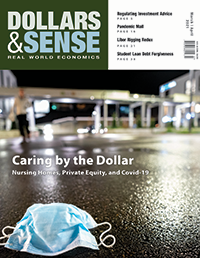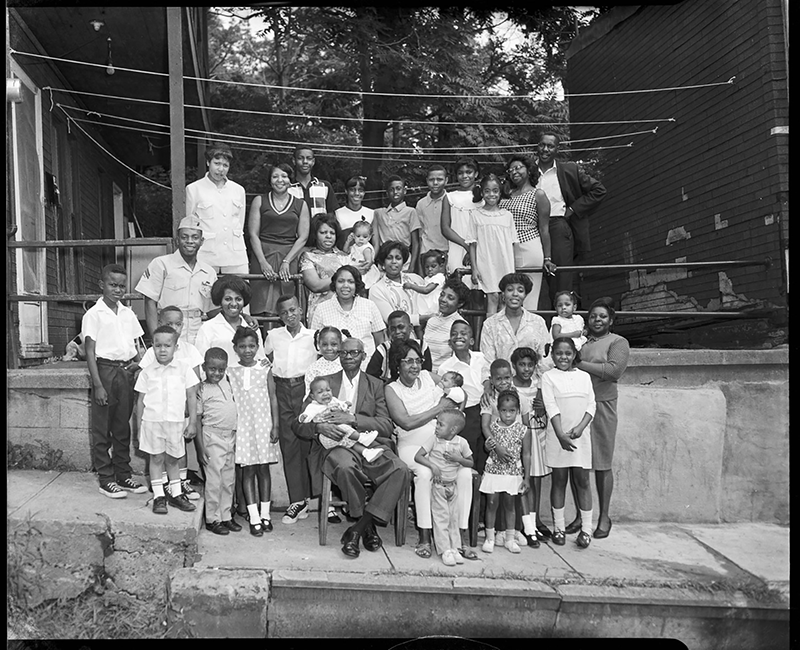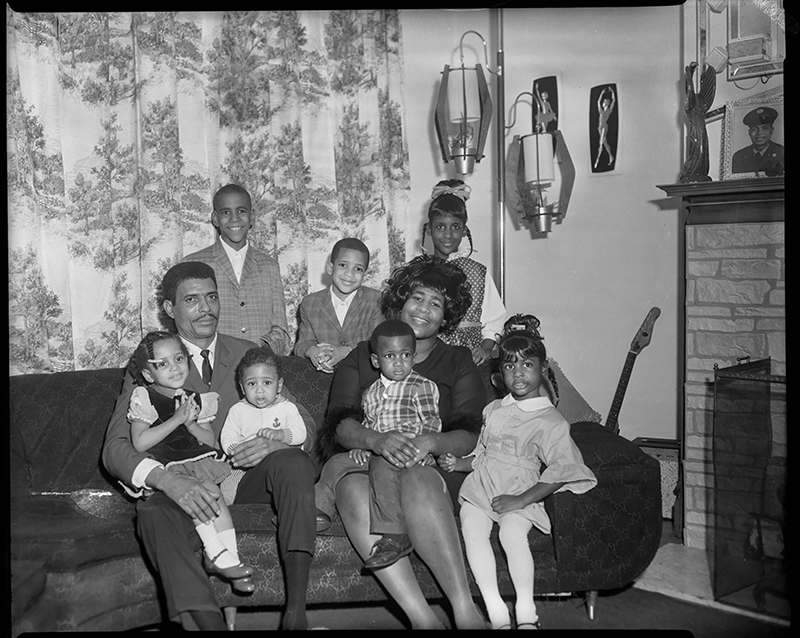Economists, the Trump Tariffs, and Alternatives
One should not jump from the condemnation of Trump’s tariffs by economists (and others) to an acceptance of free trade as a key to economic progress.
The Economic History of the Great Migration and Its Aftermath
The Black Lives Matter demonstrations during the summer of 2020 are likely the largest demonstrations in the history of the United States, as measured by the number of people in the streets. There were demonstrations in every region of the country, calling out the brutal realities of racism experienced throughout the United States. Zoe Sherman talked with Ellora Derenoncourt, assistant professor of economics and public policy at the University of California, Berkeley, about her research paper, "Can you move to opportunity? Evidence from the Great Migration." The Great Migration, dated most expansively, started in the late 1910s and continued until 1970. Over this period, six million African Americans from mostly rural areas in the South moved to northern cities. Prior research showed that when migrants are compared to otherwise similar "control groups" of nonmigrants, we see that migrants were, on the whole, able to build better lives than those who stayed behind.

Derenoncourt picked up where the prior research left off to ask what happened to Black communities in northern cities after the migration. How did migrants' children and grandchildren fare? The discouraging answer is well-known to demonstrators, at least in its general outline: Contemporary Northern structural racism can be just as debilitating as Southern variants. Derenoncourt's research contributes to our understanding, using extensive data collection and careful statistical analysis to show the results of northern cities' backlash against the Great Migration and the ensuing decline in Black upward mobility. Note: This interview has been edited very lightly for clarity.
A note on the photos accompanying this article: When northern cities are listed in order by how dramatically their demographics were altered by the Great Migration, Pittsburgh is in the middle of the list, which makes it an important comparison case. So we were thrilled to get permission from the Carnegie Museum of Art to use some of the gorgeous photographs from its Charles "Teenie" Harris Archives to accompany the interview. Harris was a staff photographer for the Pittsburgh Courier, an African-American weekly newspaper whose publication years, 1910 to 1966, coincided almost exactly with the years of the Great Migration. His photos chronicled all aspects of Pittsburgh's Black community in the mid-20th century; we have selected three photos that show gatherings of multiple generations of Black Pittsburgh residents, whose lives would have been shaped profoundly by the Great Migration. Tens of thousands of photos from the collection can be viewed at the museum's website (cmoa.org/art/teenie-harris-archive). --Eds.
Dollars & Sense: Before you began your research there had already been a decent amount of work looking at the economic results of migration for the migrants themselves. What was already known about the connection between geographic mobility and economic mobility and what new questions did you then want to ask?
Ellora Derenoncourt: That's a great question. So, the Great Migration to the North--I mean the North was known as the promised land for a reason--and research on the effects of the migration on the migrants themselves had shown that you could essentially double your earnings by moving to the North. Comparing a migrant to good control groups of people who stayed in the South showed migrants could literally double their earnings throughout the Great Migration. So, I was aware of that research, just because of my training as an economic historian and also my love for history and Black economic history.

Group portrait of a Pittsburgh, Penn. family, 1967. Photo by Charles "Teenie" Harris, from the Charles "Teenie" Harris Archive, (C) Carnegie Museum of Art. Used with permission.
It was when I saw, about four or five years ago, these maps published in the New York Times on the question "Where is the land of opportunity in the United States?" based on the work of Raj Chetty and his collaborators that I noticed two things about the geographic patterns in upward mobility in the United States today. One is that the South is kind of this region of low upward mobility. But then there were also these pockets of low upward mobility in cities across the northern United States. And I immediately recognized those as the former Great Migration destinations. So, in other words, the maps seem to show that where Black people in the United States live, those areas have low outcomes. And the fact that the former Great Migration cities looked that way I thought was tragic because, again, this was the promised land. This was where you were supposed to be able to escape, historically, Jim Crow and the explicit repression of the South and live to your potential and aspire to have your kids live to their full potential as well.
D&S: You approach this question of the remaking of some of these northern cities into places of low opportunity by comparing northern cities whose demographics were significantly remade by the migration--the ones that Isabel Wilkerson referred to as the "receiving stations" [in her book The Warmth of Other Suns: The Epic Story of America's Great Migration]--to those that were not major destinations for new African American arrivals from the South. What kind of patterns and variations did you see in flows of people from south to north?
ED: Right. I was very interested as you just said in understanding how these places that were part of the promised land essentially became mobility traps. As I started digging into this and looking at where Black migrants went in the North, I noticed that they actually went in higher numbers to places that were better [then], where they had very good outcomes. They had higher upward mobility, to the extent that we can measure that using historical census data. So, one, it seemed like you could imagine African American migrants had the map of opportunity in 1940 and they followed it. So that's the first thing.
The second thing to note is that much of the migration was driven by the search for economic opportunity in the manufacturing sector and so there is a correlation between where Black migration increased in the North and the share of the labor force in manufacturing. The degree of industrialization was a driver, and then also another very strong driver of where migration occurred was the presence of communities of migrants from the South before. Black migrants tended to go where there were communities of Black Southerners. There were also--and this was important for my research strategy--idiosyncratic links between specific locations in the South and specific cities in the North. That's what allowed me to estimate the quote-unquote "causal" effect of the Great Migration on northern cities, by exploiting the fact that, for example, Detroit drew migrants from Alabama--the plurality of migrants into Detroit came from Alabama--while the plurality of migrants into Baltimore came from Virginia, so I could use economic changes in Alabama or in Virginia to predict the change in the Black population in Detroit or Baltimore. That was really critical to isolating out the effect of this dramatic change in the racial composition of these cities and this increased migration from other characteristics of these locations that might have also determined the trajectory of upward mobility in those locations.
I can give some specific examples that might be helpful: For example, in Alabama, as the share of agricultural labor in cotton declined over time, as that sector shrank and experienced economic decline, you had more and more people leaving the state for better opportunities. A lot of them ended up in Detroit. Another example is Virginia, which during World War II was actually the recipient of a lot of defense spending. Now, this works in the opposite direction because it creates local jobs and increases the opportunity cost of migrating out of Virginia. So, you can use those numbers to determine lower levels of migration into Baltimore.
D&S: I was struck hearing you talk about how well-chosen the destinations were because we know how deliberate the efforts to restrict information were. It's kind of remarkable and really impressive that the choices were so well made.
Your research focused in particular on migration in the period of 1940 to 1970 and then the 21st century outcomes for the children and grandchildren of those migrants residing in urban northern cities. What was your headline finding? The northern destination cities, as you noted, were almost certainly better places for the new arrivals to build a life than the places they left behind had been. How did their descendants fare in those cities?

Women, children, and a man in the interior of small church in Pittsburgh, Penn., c. 1950-1970. Photo by Charles "Teenie" Harris, from the Charles "Teenie" Harris Archive, (C) Carnegie Museum of Art. Used with permission.
ED: My headline finding essentially is that the Great Migration and this influx of Black Southerners into northern cities dramatically changed the destinations and cities reacted to these stark shifts in their racial composition. When I say cities reacted, I mean a bundle of things. I mean that there was increased white flight out of urban areas into suburban ones in these destination metropolitan areas; there were changes in government spending, a reallocation especially toward police and policing; and then there were also declines in the quality of the urban environment: higher crime, longer commute times, urban sprawl, and all kinds of examples of how life became worse in Great Migration areas. And the key thing that I find is that the kids growing up in these locations today suffer worse outcomes. So, if I were to compare children growing up in a former Great Migration destination to those growing up in a northern city, but one that was less affected by the migration, I find that those in former Great Migration cities do worse as adults. They earn lower income as adults and on a number of outcomes look to be doing less well.
D&S: This is a heartbreaking finding, and you describe some of the ways that these doors of opportunity started to close. Did these destructive reactions--the white flight, the segregation, the disinvestment in social infrastructure, the over-policing, all of these things--did they tend to make northern cities worse places to live for everyone? Were the people driving these changes really shooting themselves in the foot, or were the harms concentrated?
ED: It's important to note that the effects weren't the same for all groups. What I find is that Black men bore the brunt of changes in destination locations in response to the Great Migration. So Black boys growing up in Pittsburgh, which was at the median of this big influx of Black migrants flowing to the North, compared to those growing up in Baltimore, which was really at the high end, getting a lot of migrants coming in... [the kids in Baltimore] do worse, even when I account for the family resources they grew up with. So, take two kids, parents earning the same amount, one growing up in Pittsburgh and one growing up in Baltimore. The one growing up in Baltimore does worse, and as an adult is going to earn less and is going to be less likely to work. So that's a very striking finding and I find that these effects really are largest for Black men. They're true for Black men from low-income families who grew up in low-income families, but also for those who grew up in higher income families, those whose parents were in the higher part of the parent income distribution.
When I look at other groups, the effects are more muted. So, for example, I see very little effect on white men and women, especially those from higher income families, and still muted effects for those from low-income families. Interestingly, I find muted effects for Black women as well. And that kind of ties back to an existing literature that finds that boys are more responsive to changes in their environment, changes in their family structure than girls are, and there's reasons for that. There are many. And that's kind of a whole separate literature. My findings are very consistent with that: The effects are really loading on Black men as a subgroup, and that clued me into some of the mechanisms that might be explaining those differences.
D&S: In reading your work I'm reminded of Albert O. Hirschman's Exit, Voice, and Loyalty framing. If you're in a bad situation, do you leave and head for something better? That's the exit option. Or do you stay and try to make changes where you are? That's the voice option. And then how do these two strategies interact with each other? What do you think we can learn from your research about strategies, both individual coping strategies and collective action strategies, for confronting racial inequities today?

Portrait of a Pittsburgh, Penn. family in their living room, c. 1955-1975. Photo by Charles "Teenie" Harris, from the Charles "Teenie" Harris Archive, (C) Carnegie Museum of Art. Used with permission.
ED: Well, I like to say that if you look at the history of Black people in the United States, it's very clear that collectively Black Americans have acted rationally. So, when conditions were really bad in the South, there was a mass movement out of the region in search of places without codified political, economic, and social oppression of Black people. And as we've discussed, there were clear gains at the time, and we think it was the right move at the time. I formally analyze that in my paper and say, "Where would Black people be without this huge population movement to a higher income region of the country?"--and they would be worse off. At the same time, northern cities really failed Black Americans. They came for a better life and cities reacted to Black people moving in in these ways that I discussed earlier: white flight and increased segregation and changes in the urban policy response to urban decline, and this has ultimately harmed Black men in particular. I think there's a lot of research showing that criminal justice policy has exacerbated racial inequality. So, taking all of that into account, northern cities didn't hold up their end of this moving-to-opportunity bargain. And Black people turn around. Since 1970 net migration for Black Americans has been back toward the South, not to the North, and that's a really big change. And I think that this is again very, very rational. If you look today--and this is maybe surprising to people--outcomes for Black Americans in the South are even better than in a lot of these northern locations. So that's kind of the collective strategy, I think: another search for opportunity, and I'm hoping to look at this more closely in my upcoming work. The South is more racially integrated than the North, housing outcomes look a lot better: there are higher rates of home ownership, higher rates of living in new housing units. So, there are all these dimensions on which the South actually looks better.
Individual coping strategies? Boy, that's a tough one. I'm not sure of the best answer to give there. I know that when I look, this comes back to the issue of gender heterogeneity. There is some piece there about what Black women are doing to try to make up for the loss of income of the men who they typically form partnerships with, because I don't see that their economic outcomes are as adversely affected. It's hard for me to figure out how and why; I need better data to do that. But there are clearly some coping strategies, trying to get around this. I think one of the big takeaways of my paper is that, as a counterpoint to a lot of work that's pushing "moving to opportunity" or housing vouchers to address poverty, I think we need to think seriously about policies that lift places up rather than inducing or incentivizing people to leave. One, a policy like the housing voucher policy is only going to ever affect a tiny, tiny fraction of people. And two, if you really were serious about scaling it up, you'll get into these unintended consequences. We really need to think about how to lift up communities where they are.
D&S: Is there anything I forgot to ask about that you would like to add?
ED: I think I probably could have talked a bit more about the mechanisms we just barely touched on, especially crime and policing. My paper is sort of limited in in its ability to say, this is the mechanism. But if I were to tell myself what's the next paper that should be written on this topic, I really do think it is an investigation of our criminal justice system and how it's affected Black men and their economic rights and their economic outcomes. I know that there's a big debate, an ongoing one, about the efficacy of policing and the consequences of policing for communities. And I think this is precisely the area that we need to take stock of: Have our policy responses to urban decline greatly exacerbated racial inequality?